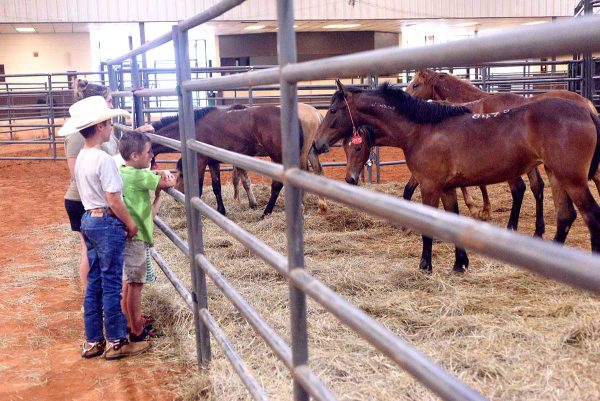Indiana student set to compete in World Dwarf Games
Published 11:57 am Wednesday, May 17, 2017
JEFFERSONVILLE, Ind. — At 10 years old, Amon Armour already knows that sports will always be a part of his life. It’s in his blood.
The fourth grader at Thomas Jefferson Elementary School in Jeffersonville has spent much of his childhood on the sidelines watching his father coach football and watching his sister and cousins play basketball. He’s hung out with players on his favorite team at the University of Louisville, met some of his favorite coaches, and even assisted in coaching at times.
“He doesn’t know anything but sports arenas, gyms, basketball courts, baseball fields, football fields,” his father, Will Armour, said. “It’s normal to him and he doesn’t shy away from anybody.”
He plays ball with his older cousins and friends every chance he gets and he’s not stopping any time soon. This August, Armour will compete on an international sports stage for the second time in his young life at the World Dwarf Games in Ontario.
“I feel great,” he said. “I’m amazed. And I’m ready.”
Armour was diagnosed as an infant with a form of dwarfism called achondroplasia. He’s known as a little person. But as his mother, Tasha Moorman, told the Jeffersonville, Indiana News and Tribune, “He doesn’t care about size. His cousin and his best friend are both 6-foot and he’s like ‘Hey, I’m going to play them one-on-one.’ Just the fact that he’s not scared to get out there and do it is the biggest thing.”
Although he routinely holds his own with older and average height players, getting the chance to go to these games is a unique experience.
“I’m playing them, but they’re taller,” he said, simply, about playing the older kids. “And I can still beat them. It’s like everything is normal.”
But playing at the World Dwarf Games opens up a bigger opportunity — he’ll be playing basketball, soccer, air hockey and throwing shot put. Players from around the world, ages 4 to 99, will compete on teams according to their age and skill level.
“He doesn’t get to do as much and be involved (as much) as the other kids in the area, so for him to be able to participate on teams where he is even with the rest of the kids, that’s very important to us,” Moorman told the Jeffersonville, Indiana News and Tribune.
Armour played in the games four years ago when he was 7 years old, where teams from 17 countries competed in Lansing, Mich. He made friends that he’s still in contact with and learned an important lesson.
“Always be a team,” he said.
At home, his friends are average height but that’s not an issue. Armour’s best friend, Darryl Baker, said he’s always ready to play ball with Armour; they have a lot of fun and have both learned from each other.
“I’ve learned a lot of life lessons from him,” Baker said, “about respect, about not giving up. He’s been through a lot of obstacles in life that (other) people don’t go through.”
Armour has had some health complications from the achondroplasia in the past — a routine MRI exam when he was a toddler turned much more serious when the anesthesia he was given caused his smaller airways to close. He spent the next eight days in the hospital, six in intensive care. This happened two more times with shorter hospital stays.
“It threw us,” his mother said. “We didn’t see it coming, going for an MRI.”
But those days are past — Armour doesn’t get sedated for the MRI because he’s old enough to hold still for them, not like when he was a baby. And the other health issues are minimal, like his slight flight asthma from an airplane’s cabin pressure.
He still has annual visits to a specialist in Indianapolis and regular doctor’s visits in between. He’s in the higher height percentile for children his age with achondroplasia.
“We have to take some precautions with him but nothing out of the ordinary,” Will Armour said. “We teach them all that you can’t get caught up on little things so that when the big things come you can handle them better.”
Armour loves playing basketball and soccer the most and wants to eventually coach. He also aspires to be a doctor.
“The thing that we’ve always taught him is you’re not going to get any breaks,” Moorman said. “We don’t want people to feel like they need to hand him anything because he’s little. You make your way in life and you determine what it is you are and are not going to do without anybody saying ‘Hey, let me do it for you.’
“Do it for yourself. And he does it.”
Rickert writes for the Jeffersonville, Indiana News and Tribune.


